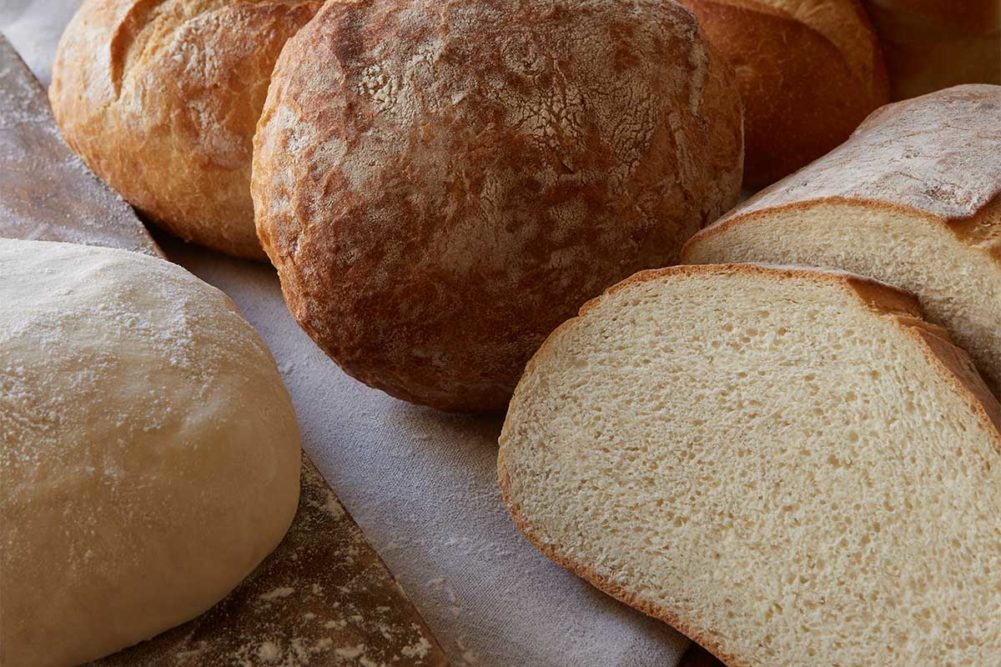While consumers are demanding low-carb baked goods, they have little tolerance for taste and texture impacts they may come with. That’s why it’s critical bakers adding fiber ensure their products still meet consumer expectations.
For example, when removing sugar, bakers may need to add ingredients like stevia to replace its sweetness. A neutral or mildly sweet-tasting fiber that doesn’t impart off-notes or color is desirable as well.
“With their sugar-like technical properties and a mild sweetness profile, [chicory root fibers] work synergistically with natural and high-intensity sweeteners, facilitating sugar reduction while maintaining the taste and texture of the final product,” said Jamie Matthews, head of customer technical support, North America, Beneo.
But sugar performs many functions beyond sweetening, so bakers must understand everything it’s doing in their formula before replacing it, emphasized Julia DesRochers, PhD, bakery technical services at Tate & Lyle. For example, when creaming with fat, bakers should determine how much browning is desired, if cookie spread is needed and how bulk and mouthfeel are affected.
“If reduction in total carbohydrates requires more than sugar replacement and insoluble ingredients like flour must also be reduced or replaced, then an insoluble fiber may be needed,” Dr. DesRochers explained.
Insoluble fibers can combat the texture challenges bakers may face in keto formulations, including grittiness and hardness that occur from excessive water binding.
“Some fibers absorb and bind five or more times their weight in water,” noted Brook Carson, vice president of research and development at Manildra Group USA. “This may be beneficial in some applications but not as the primary fiber source in bakery.”
Resistant wheat starches bind to similar amounts of water as wheat starch, which can result in a better bake out and texture in baked goods, she said.
They also offer a similar white color, flavor and smooth texture to wheat starch, said Tanya Jeradechachai, vice president of R&D at MGP Ingredients.
“Fibersym RW wheat starch has the same shape and size as normal wheat starch, therefore it doesn’t disrupt the protein matrix nor interfere with processing,” she said.
Wheat protein isolates are often incorporated as well to ensure structure and dough viscoelasticity.
“The easiest way to achieve a keto-friendly claim with a high-quality product is to combine resistant starch with wheat protein isolates,” she said.
Manildra’s GemPro HPG, for example, may be preferred for providing structure, Ms. Carson said, while GemPro Prime-W is ideal for sweet goods to yield aeration and a soft, open texture.
For bakers, the potential flavor and structural impacts to their baked goods will depend on the type of fiber, the quantity and the application, noted Erin Nese, senior technologist, commercial innovation acceleration, Ingredion Inc.
For example, Ingredion found its RS4 wheat resistant starch resulted in decreased volume, a denser crumb and residual mouthcoating when added to buns as a 1-to-1 swap with wheat flour, requiring changes to the buns moisture content.
However, when the same starch replaced wheat flour in a muffin, it resulted in higher volume and less firmness.
“Finished product shape, volume and texture may be adversely affected if the fiber or other ingredients are not sufficiently hydrated,” Dr. DesRochers said. “Therefore, taking formulation and process into account is very important when selecting fiber solutions for developing reduced carbohydrate and/or reduced sugar baked goods.”
The keto and high fiber trends show no signs of slowing down, and bakers can capitalize on consumers’ appetite for both by adding fiber to their baked goods.
This article is an excerpt from the December 2022 issue of Baking & Snack. To read the entire feature on Fiber, click here.





